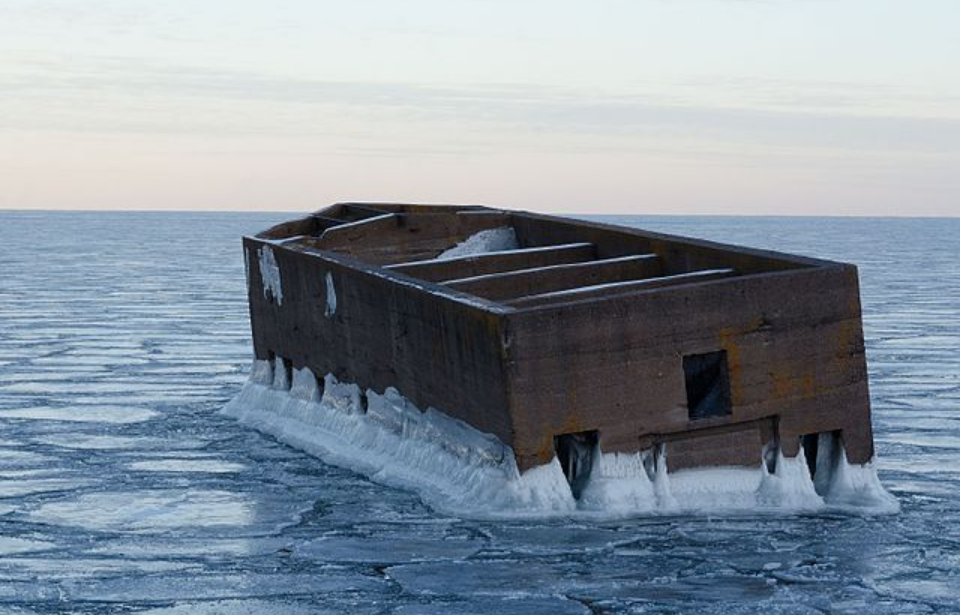Lake Superior is shared by many: Minnesota to the west, Wisconsin and Michigan to the south, and Ontario to the north. It’s by far the largest lake in North America in both surface area and volume, and its role in human history dates back 10,000 years. However, that’s not what makes it interesting – a peculiar and large concrete structure that lies abandoned just 30 feet from the shoreline of Duluth does, however, and locals have nicknamed it “Uncle Harvey’s Mausoleum.”
Duluth, Minnesota
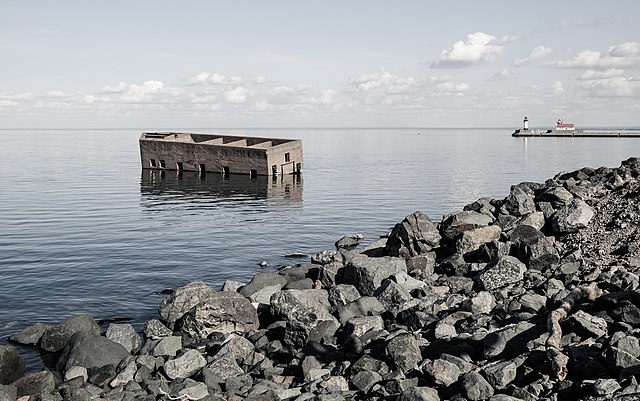
Duluth is a port city in Minnesota, along the coast of Lake Superior. Known for being a hub for shipping and industry, it was once the busiest port in the entire United States, with US Steel erecting a plant in the city. It played a part in the war effort during the Second World War, and while it suffered an economic decline in the decades following the conflict, still has an integral role in the country’s shipping industry.
Theories abound regarding Uncle Harvey’s Mausoleum
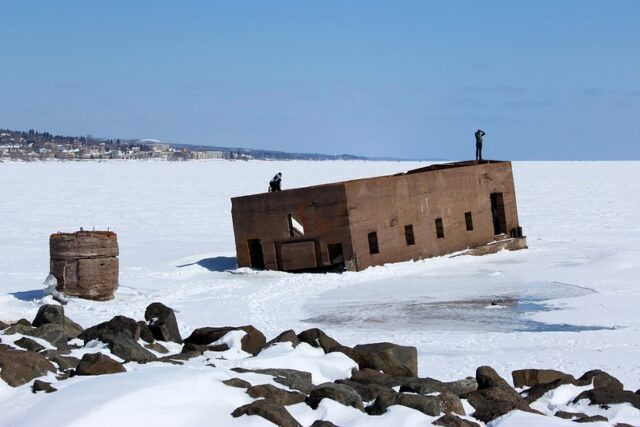
There are many theories regarding the intended purpose of Uncle Havey’s Mausoleum. Some suggest it was used as a Prohibition-era off-land casino, while others say it was a distillery. However, neither of these claims has ever been confirmed.
Origin of the peculiar structure’s nickname
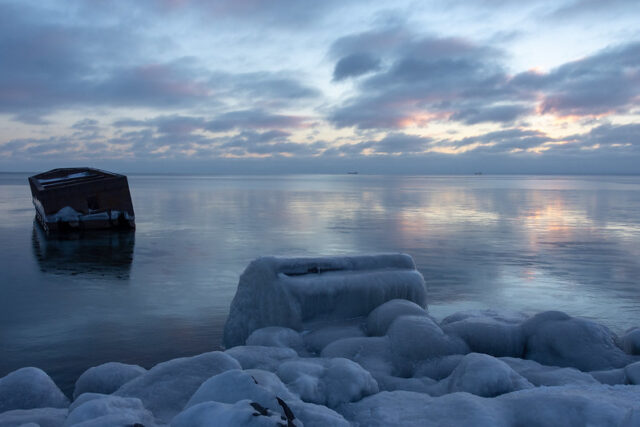
The nickname “Uncle Harvey’s Mausoleum” is the result of another theory that suggests it’s the tomb of Uncle Harvey, one of the Whitney brothers. Together, William A. and E. Harvey Whitney of Superior owned and led the Whitney Brothers Rock Crushing Business, a sand and gravel processing business.
The peculiar structure goes by a number of other names – the “Cribs,” the “Old Building in the Water” and the “Ice House” – but the majority of locals know it as Uncle Harvey’s Mausoleum.
There is some truth to the name
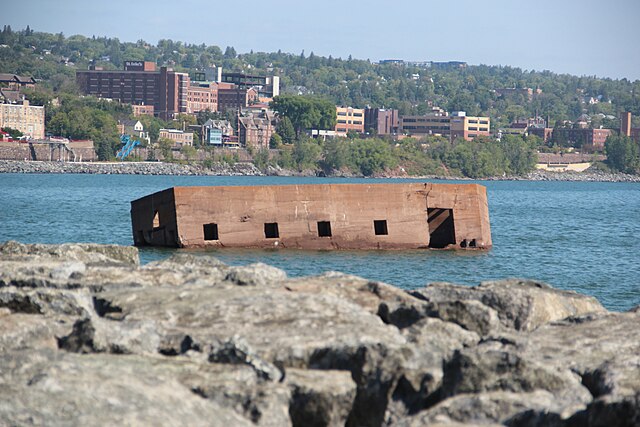
Although the structure doesn’t house Uncle Harvey’s remains, there is some truth to the name, as it actually became a tomb for his business. The company was exploiting sand and gravel from the many islands in Lake Superior and bringing it back to land.
While this operation proved largely successful, obstacles caused problems. The biggest was the overwhelming water traffic on the lake, especially between Apostle Island, Madeline Island, Basswood Island, Oak Island and the shores of Minnesota. The barges carrying the gravel and sand often had to wait for the traffic to clear, so they could pass to the shore. The brothers had an idea to combat this issue and took some great risks to carry it out.
Constructing the ‘mausoleum’
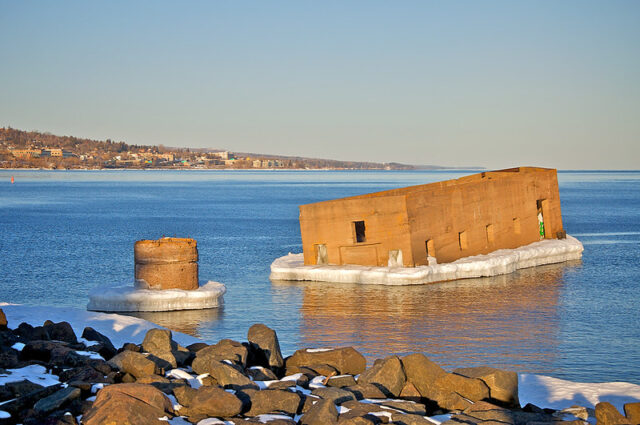
In the winter of 1919, the Whitney Brothers put almost all their capital into building the “mausoleum,” with the idea being for it to serve as a big container known as a “hopper.” Their ships wouldn’t have to cross the busy canals on Lake Superior. Instead, they’d only have to get to the hopper and dump their cargo within.
There was a tunnel that ran the material to Minnesota Point, equipped with a steam-powered moving belt line to transport them straight to shore.
Without the necessary funds
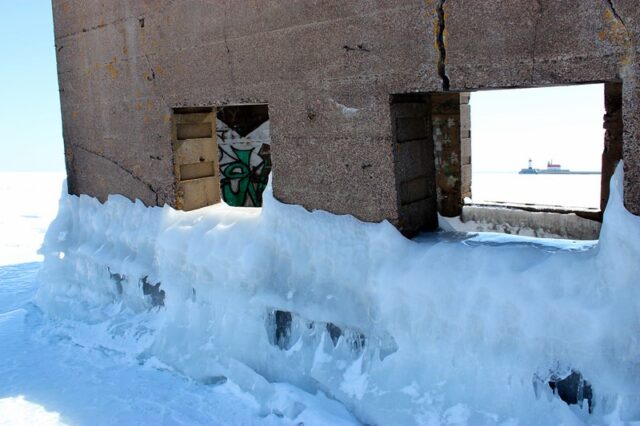
The idea of Uncle Harvey’s Mausoleum seemed at first to be a revelation. However, with all their money invested into it, they had none left. The Whitney brothers were counting on selling the materials needed for the construction of a planned outer harbor breakwater the city of Duluth had promised to build. Unfortunately for them, the port was never built and their gamble didn’t pay off.
What they also hadn’t anticipated – or, perhaps, gambled against – was Mother Nature and the force of Lake Superior’s volume of water. Large waves constantly banged against the hopper and pieces were chipped off. Repairs needed to be carried out frequently after each storm as a result.
The Whitney brothers’ operation shut down and the hopper was abandoned in 1922, just three years after it was built.
Swimming out to visit Uncle Harvey’s Mausoleum
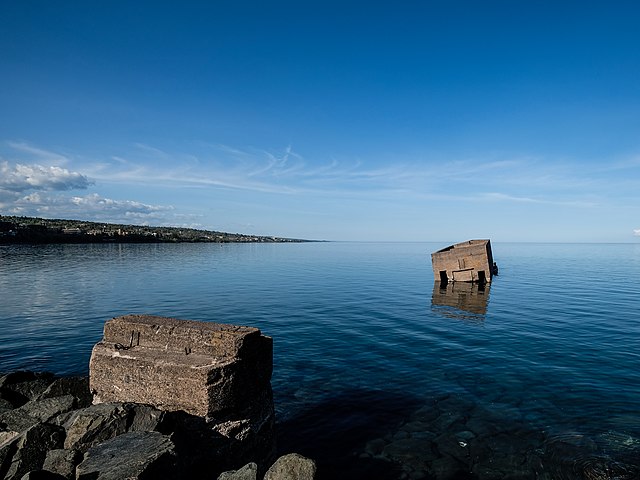
More from us: The Abandoned Remains of the Historic New York State Pavilion
Today, Uncle Harvey’s Mausoleum is largely a nesting place for birds. That being said, it still gets its fair share of human visitors each year. During the warm summer months, beachgoers swim out to the concrete structure to get a closer look at it, sunbathe and use it as a diving board.
